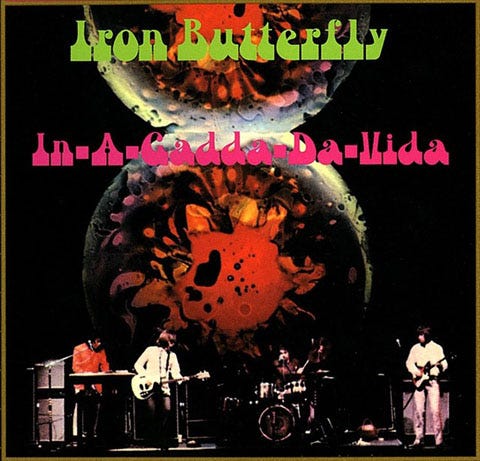‘Time of the Season’ by The Zombies was featured as the closing track on their 1968 album Odessey and Oracle. For those that don’t know the story, Terry Quirk, an acquaintance of bassist Chris White, created the cover illustration for their album, which notably includes a spelling error; "Odyssey" is incorrectly spelt as “Odessey.” Initially, some members of The Zombies claimed this misspelling was deliberate. However, in recent years, the band acknowledged it as a mistake they realised only after the album had been printed.
This song, now regarded as a classic, was also a decent-sized hit in the US when released as the third single from the album. Reaching as high as #3 on the Billboard Hot 100, it is now one of those go-to songs for film and TV to evoke a sense of blossoming psychedelia with credits on Cruella, Endeavour, All The Money In The World, The Simpsons and of course The Vietnam War documentary from 2017.
The Zombies were part of the British Invasion, the first wave of British bands that succeeded in the US in the mid-1960s. By the time Odessey and Oracle was recorded, the band was already well-established, with hits like ‘She’s Not There’ and ‘Tell Her No’. However, Odessey and Oracle, particularly ‘Time of the Season’, represented a significant evolution in their sound and artistic vision.
‘Time of the Season’ has one of those distinctive bass lines, a sibilant vocal chorus, psychedelic lyrics and a light organ riff just before they reached saturation levels as 1969 began. That organ sound, whether Hammond, Lowrey, Mellotron or traditional organ, was all over the first two records by The Band and songs by Santana, The Beatles, The Allman Brothers and even Led Zeppelin. Mere months later, you could find it on Iron Butterfly’s ‘In-A-Gadda-Da-Vida’.
I am familiar with the works of Pablo Neruda
October is the 10th month of the year, and to celebrate, we at The Run Out Grooves will look at ten-minute plus epics all month; we start with a 17-minute magnum opus that could be classified as rock and/or roll. ‘In-A-Gadda-Da-Vida’ by Iron Butterfly
Written by keyboardist Rod Argent, the song features lead vocals by Colin Blunstone and is characterised by its relaxed, laid-back vibe, which was somewhat atypical of the band’s earlier, more rhythm-and-blues-driven work. The iconic opening features a distinct and captivating drumbeat and vocal section. The drumbeat from Hugh Grundy is precise and rhythmic, marked by a steady snare drum pattern complemented by the deeper tones of a tom-tom drum, creating a hypnotic, heartbeat-like rhythm. Overlaid on this is the "ah" section, consisting of harmonised, breathy vocal sighs that add a dreamy, ethereal quality to the track. These drawn-out vocals, with their flowing crescendos and decrescendos, contrast with the grounded drumbeat, setting the stage for the song's unique blend of sounding like an early 1960s Merseybeat arrangement with the spirit of psychedelic pop from the end of the decade taking root.
The production of the rest of Odessey and Oracle was marked by creative experimentation. Recorded at Abbey Road Studios, the album used one of the Mellotrons there. It is a keyboard-like instrument that could mimic the sound of orchestras and choirs and provide an ethereal and psychedelic atmosphere. Whether it is the same one used on ‘Strawberry Fields Forever’, other tracks from The White Album or later sixties songs like ‘Jugland Blues’ or ‘In The Court of The Crimson King’ we can’t be sure, but it did give ‘Time of the Season’ a distinctive, almost ethereal sound that set it apart from much of the pop music in early 1968.
The song’s placement as the closing track on Odessey and Oracle is significant. The album is a baroque pop masterpiece, lauded for its rich textures and intricate harmonies. By ending on ‘Time of the Season’, despite our familiarity with it as a single, it concludes the album on a reflective note, encapsulating the themes of change and passage of time that run throughout the record. Its dreamy, nostalgic quality serves as a perfect bookend to an album that is both a product of its time and of the season.




![Odessey And Oracle (Mono) [VINYL]: Amazon.co.uk: CDs & Vinyl Odessey And Oracle (Mono) [VINYL]: Amazon.co.uk: CDs & Vinyl](https://substackcdn.com/image/fetch/$s_!pupi!,w_1456,c_limit,f_auto,q_auto:good,fl_progressive:steep/https%3A%2F%2Fsubstack-post-media.s3.amazonaws.com%2Fpublic%2Fimages%2Fe46740dc-a6d8-4b0f-beaf-61ae8084ad89_1000x1000.jpeg)

"What's your name? Who's your daddy? Is he rich like me?" - That has to be one of the greatest lines in rock n roll.
Love this song.